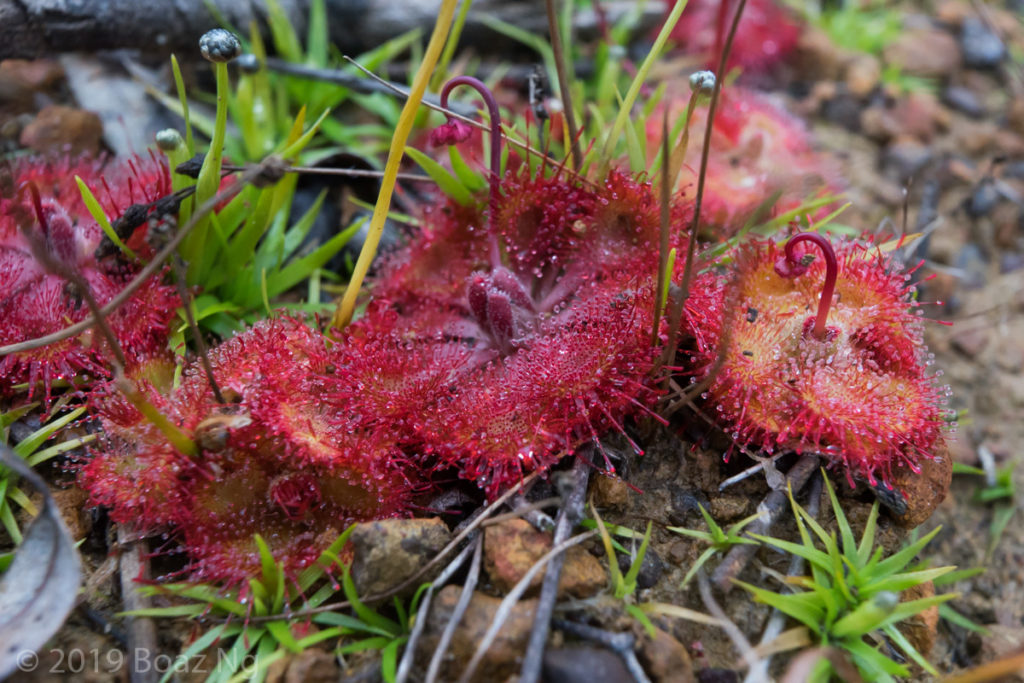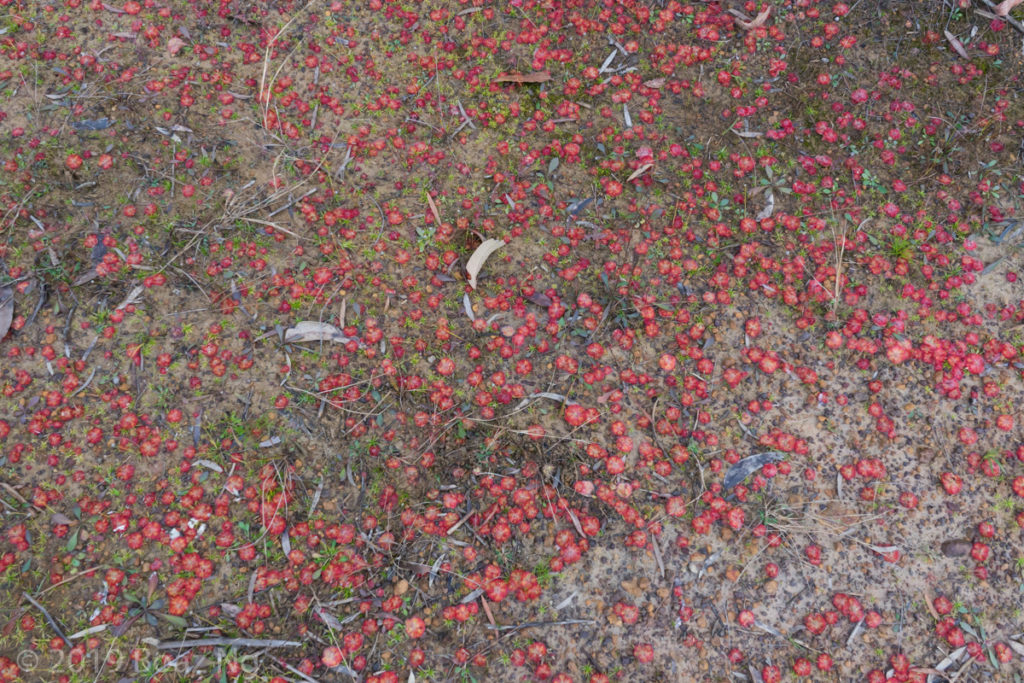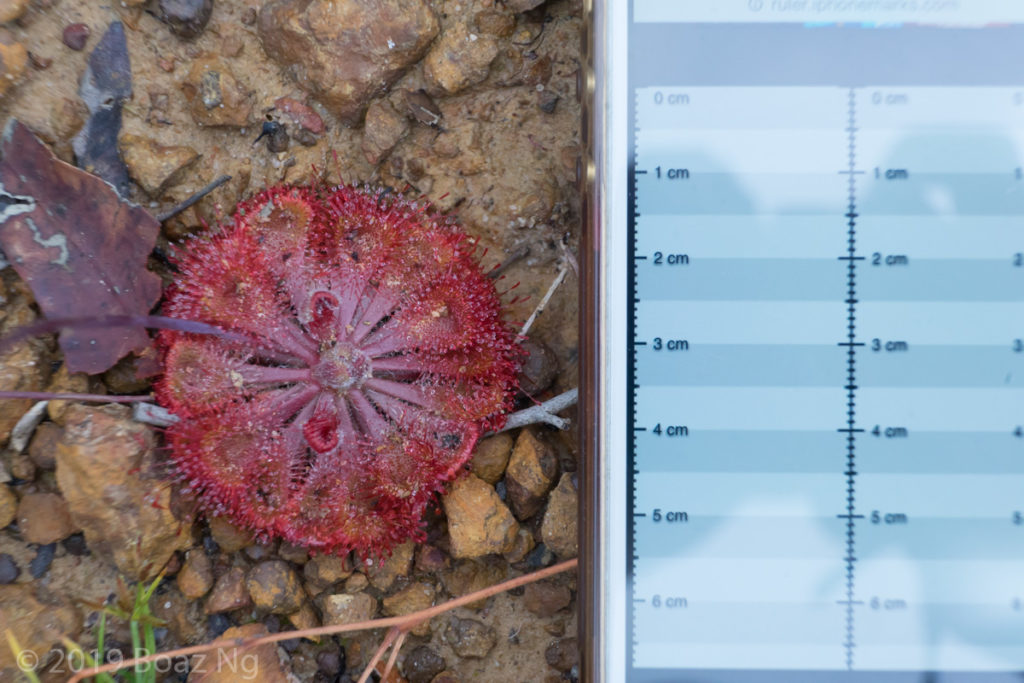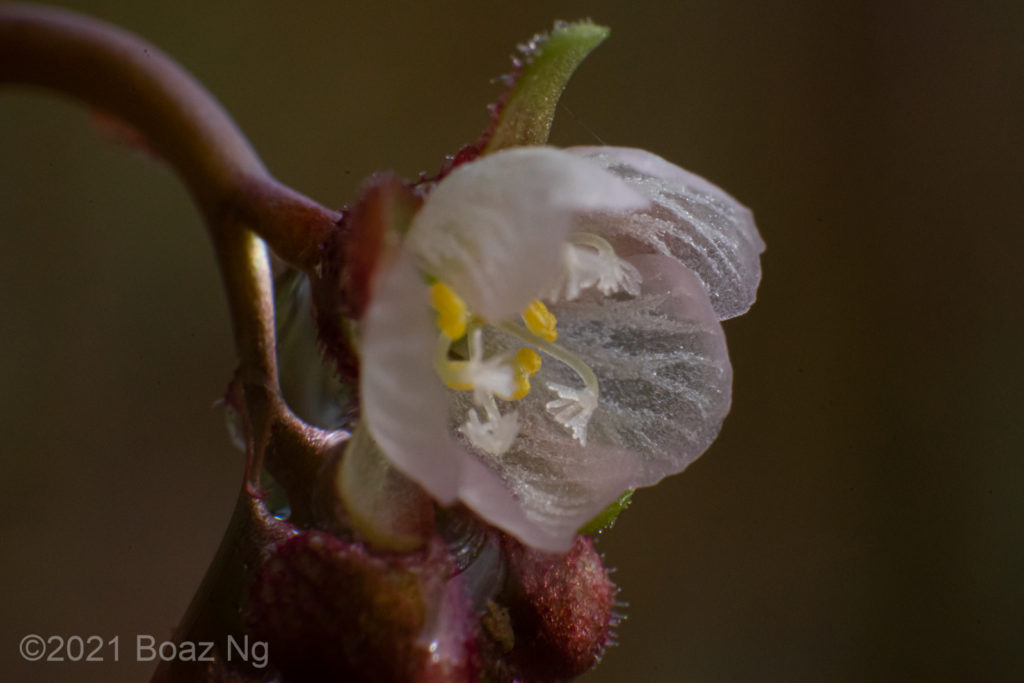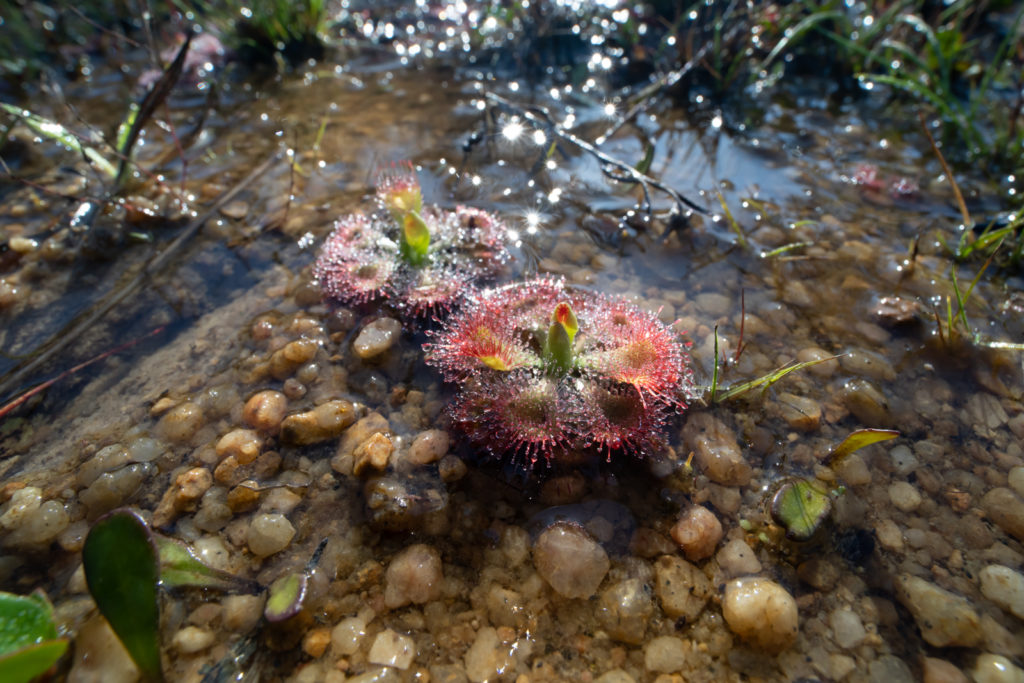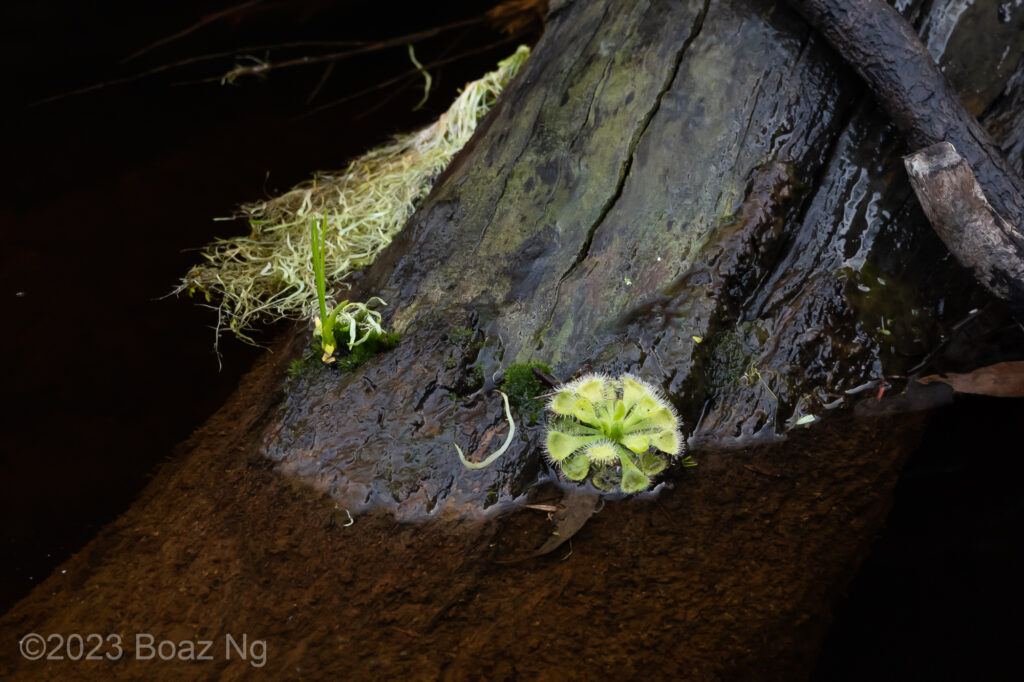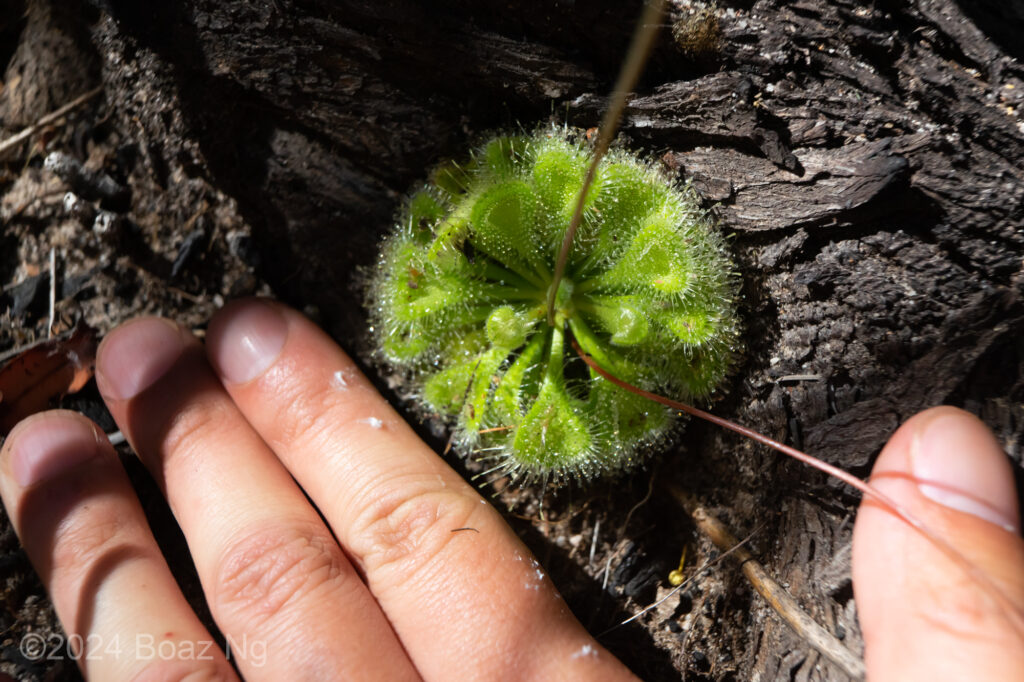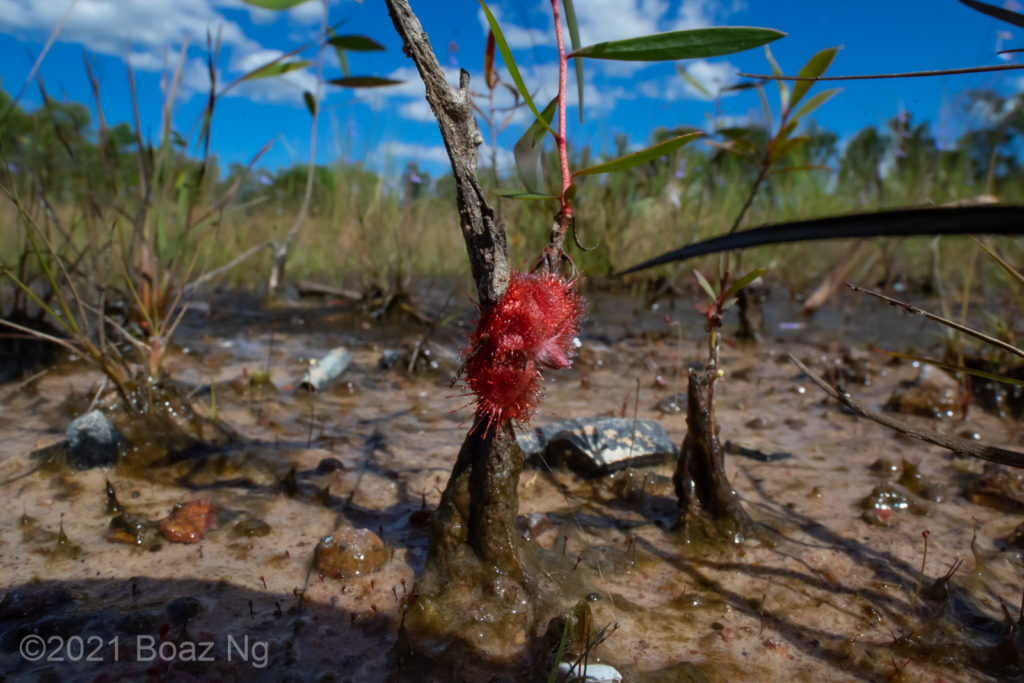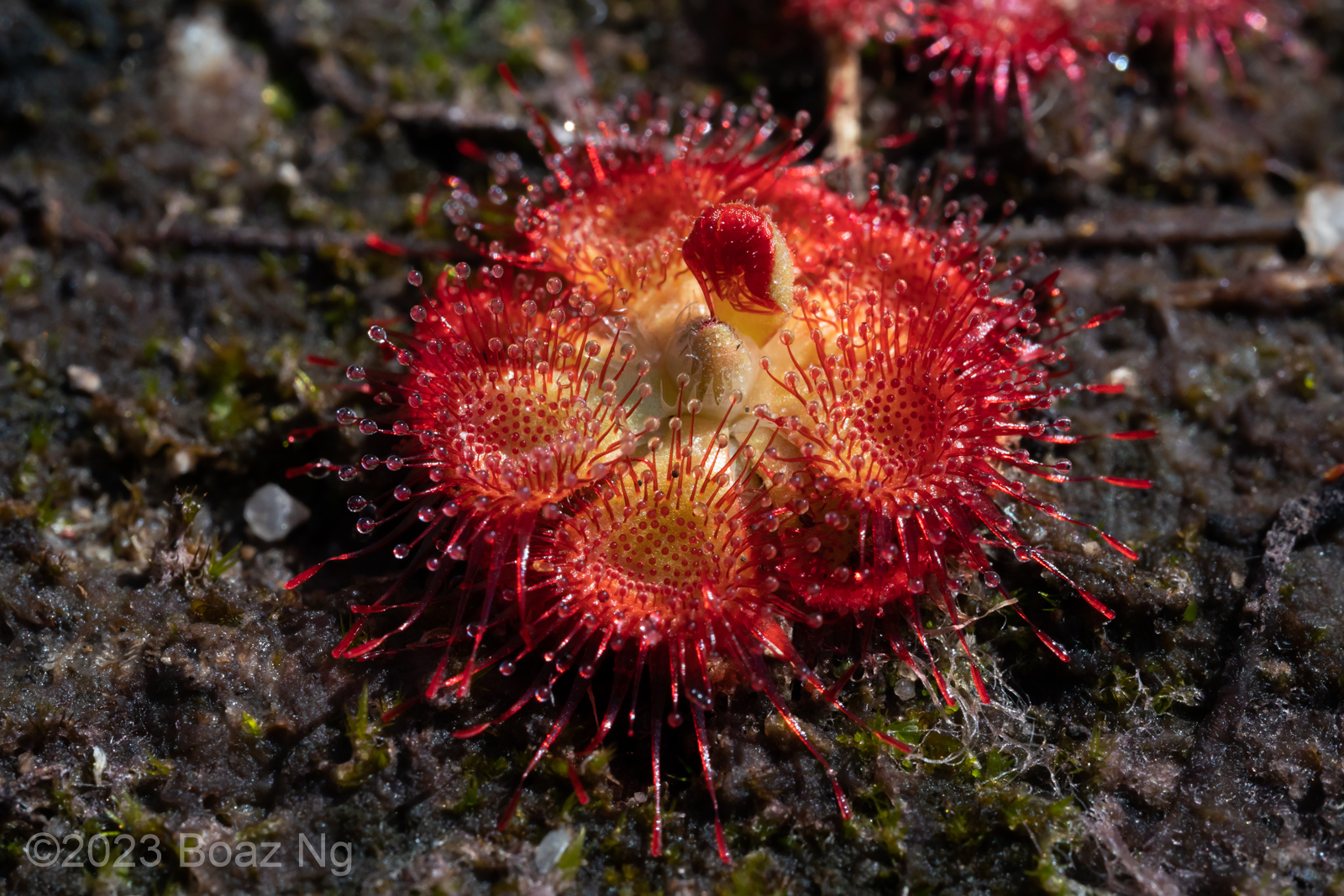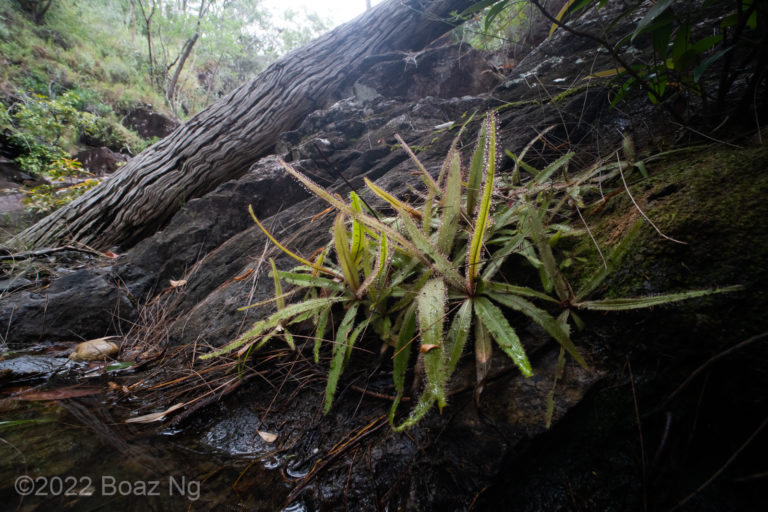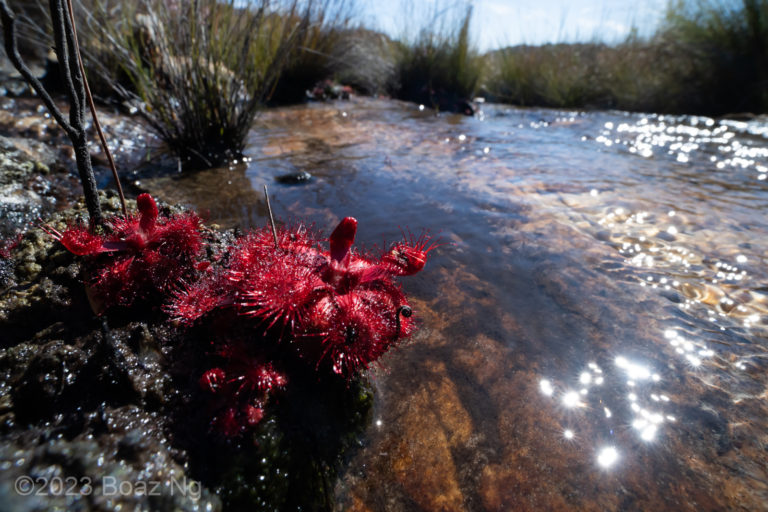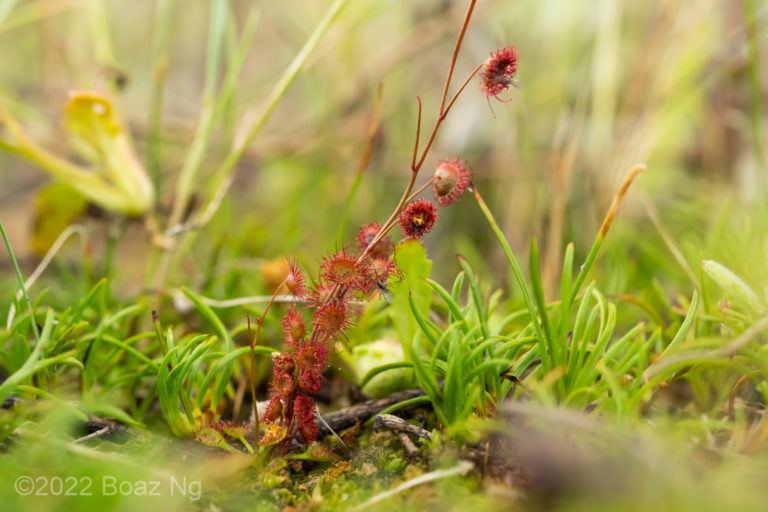Drosera burmannii is a small rosetted sundew widely distributed from Asia to Australia.
Drosera burmannii forms a rosette of around 1-3cm in diameter. The species has wedge shaped leaves which are broadened at the end. The distal edge of the leaf ranges from flattened to rounded depending on the locality. The leaves are fringed by long snap tentacles which are dewless. These snap tentacles respond quickly upon prey capture, and can bend inwards to pin the insect down in the order of seconds. It is highly variable in colour, ranging from bright green to deep red, sometimes even at the same location. The flowers are white or pink.
The species has a wide distribution across East Asia, through South-East Asia and down the east coast of Australia to around Sydney. It is usually associated with areas with a monsoonal environment, with distinct dry and wet seasons, although it can also be found in other habitats with strong wet-dry weather patterns. The plants are usually found in exposed seasonally moist environments such as seepages, creeks and clayey fields. In nature, it basically always grows as an annual, reaching adult size quickly during the wet season before setting seed and dying back in the dry season. In cultivation, plants can persist for longer by removing flower stems and regular feeding. It will tend to flower itself to death without intervention.
Within its native range, Drosera burmannii is most similar to Drosera glanduligera, which shares similar features such as snap tentacles. Drosera burmannii is distinguished by its cuneate leaves, which are more oval shaped and deeply recessed at the centre in Drosera glanduligera. Drosera burmannii is closely related to Drosera sessilifolia, which is found in South America. In nature, Drosera sessilifolia adopts a distinct flat-semi-raised rosette with rounded leaves and a distinct glandless petiole, however, plants in cultivation are virtually identical to Drosera burmannii. A more ’rounded’ leaf shape is not a valid way to distinguish Drosera burmannii from Drosera sessilifolia as it the trait falls within the natural range for the species.
